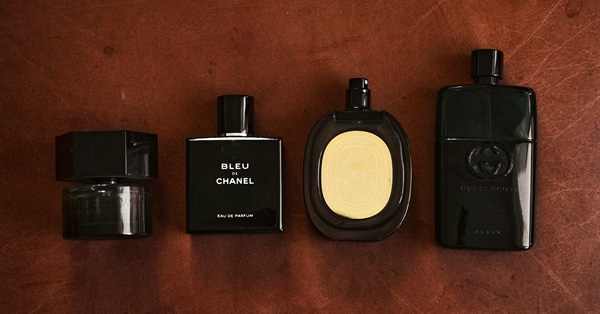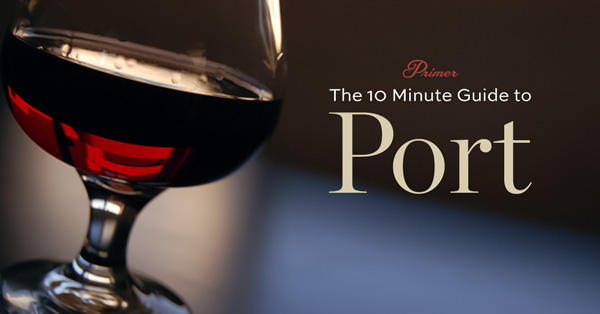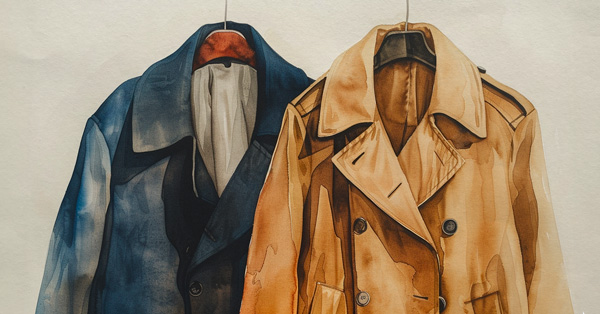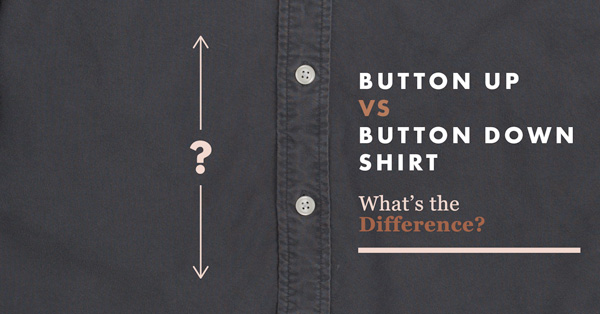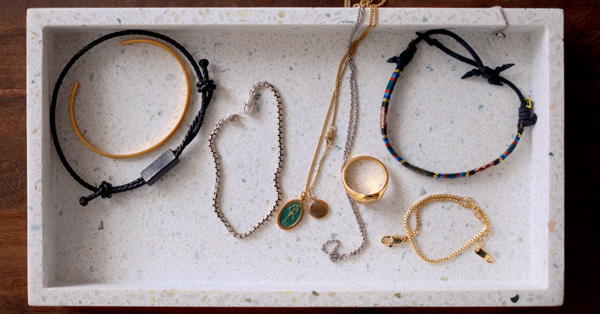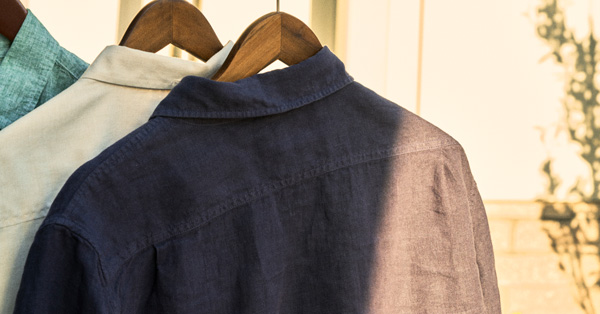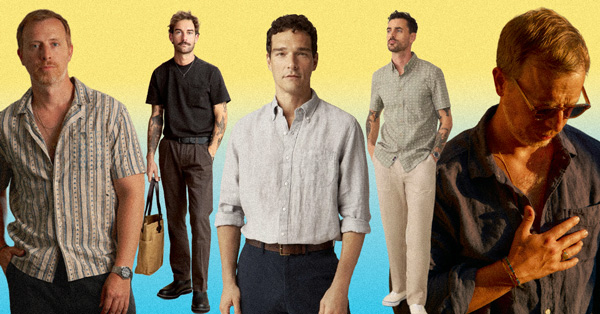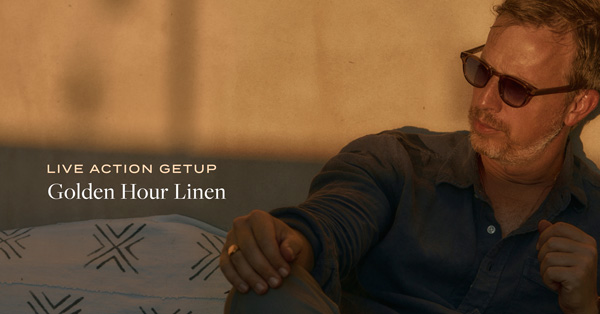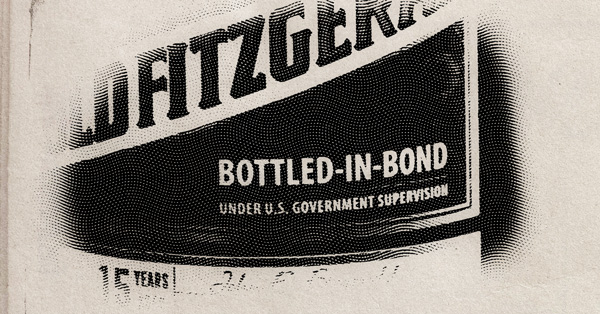The Principles of Fit
- The Philosophy of a Good Fit
- How a Shirt Should Fit - The Principles of Fit
- How Pants Should Fit: Dress Pants, Khakis, Jeans, and Shorts
- The Best Fit: Suit Jackets and Sports Jackets
- The Best Fit: The Accessories
- How Outerwear & Layers Should Fit - The Principles of Fit
Pants are particularly important because they serve as a base, or an anchor, for the rest of your outfit. Pants will mostly be in the background of an outfit, serving as a foundation for the foreground of your shirt or outerwear. They are also important because they in large part determine whether your body appears tall or short. Pants with a high rise with a long, straight leg will make you appear taller while a leg broken up by boot tucks, lower rises, cuffs or other pant breaks will make you appear shorter.
Before we delve into how pants should fit, let’s discuss the meaning of a pant break.
Updated June 2019
What are Pant Breaks
The break is the fold or bend above the cuff of the leg, which is created when the fabric of the leg is longer than your physical leg. Thus the pant line “breaks,” or kinks, near your shin when the cuff meets your shoe. If a pant has no break, then the front line of the pant will be unbent, and the cuff will just graze your shoe.
A full break is when the pant develops a deep crease–the leg breaks so much that any more length may cause a second break to develop. A half, or medium break, is between these extremes–the line of the pant bends noticeably, but not significantly. A quarter, or a slight break, is when the trouser meets the shoe and breaks, but only slightly.
Learn Your Pant Breaks
How long do you want your pants to be?
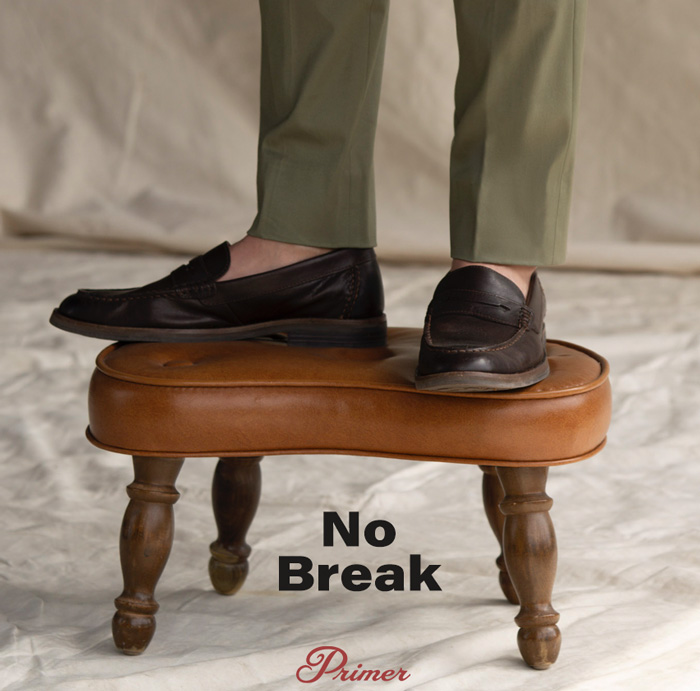
No Break – Barely any contact between the bottom of the slacks and the top of the shoe. This is a rather modern way of wearing suit paints and jeans. Be ready to show some ankle when you walk.
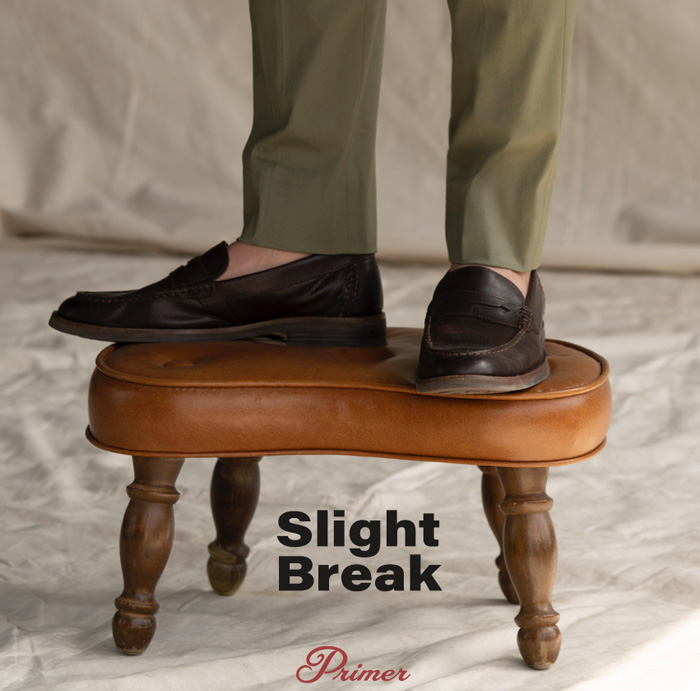
Slight or Quarter Break – The bottom of the slacks lightly rests on the top of the shoe. This look is more style than fashion geared. This is how I personally get my slacks cut.
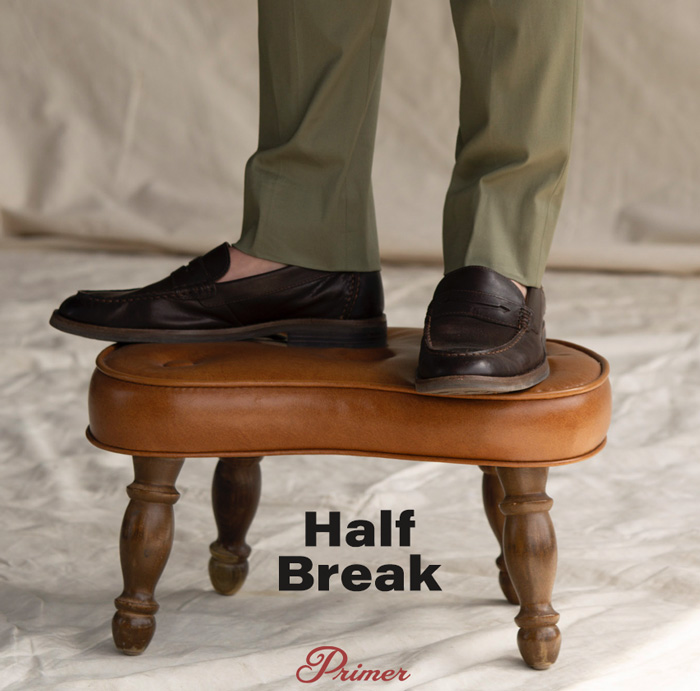
Half Break – A heavier break in the crease, this looks great with a thicker fabric, especially in those colder months.
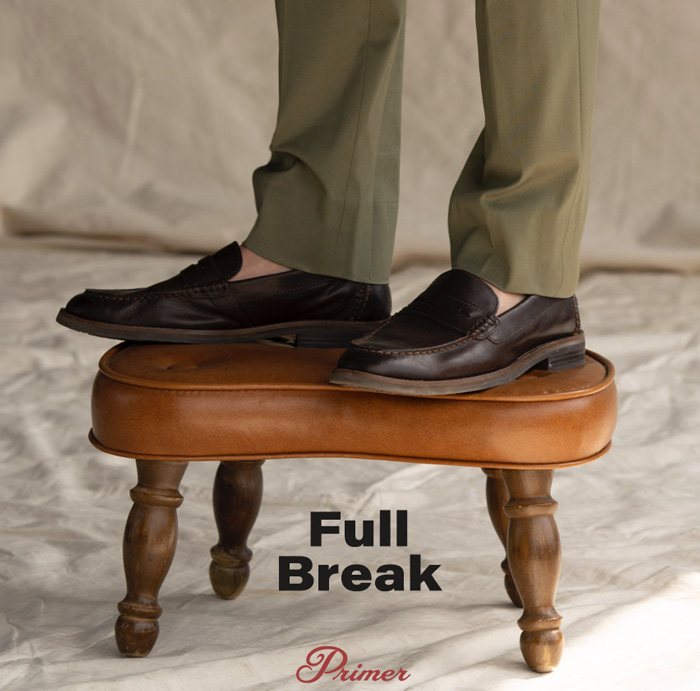
Full Break – The pant leg extends long enough to create a deep fold where it meets the shoe, often covering most of the laces or vamp. It works best with wider trousers and dressier looks, especially for taller men or those aiming for a more formal, grounded silhouette.
Proper Suit Pants and Dress Trousers Fit
Suit pants or dress pants should sit at the top of your hip bones, directly below your navel. Dress trousers will fit more conservatively than other pants, which is to say that you should not be able to see the contours of your butt.
The key here it achieve some drape while avoiding unnecessarily large or loose pants. The trousers should be slim enough at the waist that they do not require a belt to stay put, but they should not cut into your waist either. Degree of break is up to preference, some people prefer none, others prefer a full break, but most people go in between – opting for a medium break.
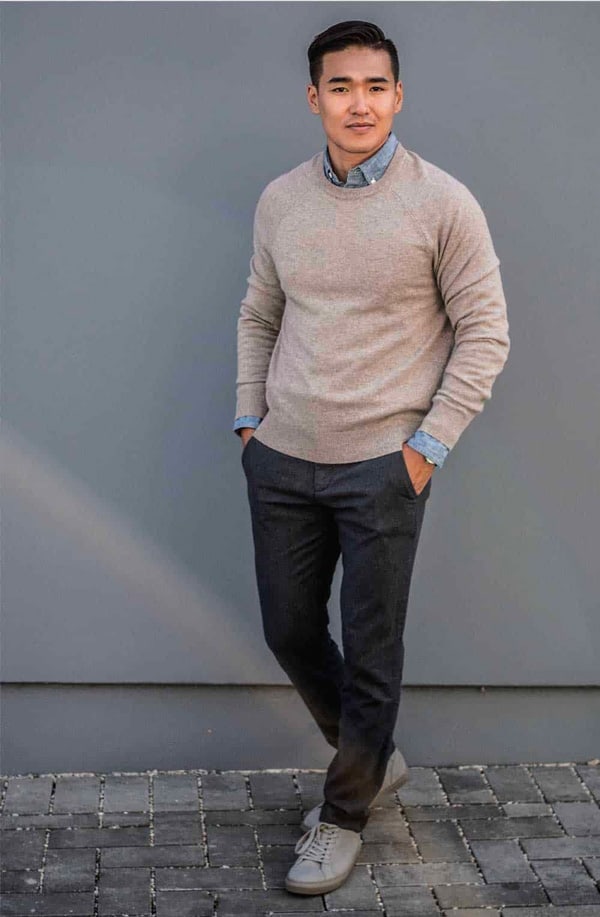
Avoid pleats, they make the seat of the pant appear unnecessarily loose.
How Khakis or Chinos Should Fit
These should fit a bit slimmer than suit pants or dress trousers, and most people also wear them an inch or two lower on their waist. However, if you are wearing chinos in a business-environment, err towards a conservative fit similar to dress trousers. If the chinos are to be worn casually, they can be quite slim.

You can tell when chinos are too slim in the seat, because they will be too form-fitting, and will occasionally display “pocket flare,” which is when the pocket does not lay flat against the pant.
Most people opt for either a slight break or a medium break for dress chinos. A full break often looks sloppy on dress chinos, but a full break or multiple breaks may be appropriate for slim-fitting, casual chinos. Again, avoid pleats. When sizing for chinos, note that they will likely stretch slightly in the waist and the seat with wear.
How Jeans Should Fit
As the most casual pant of these three, there are many different styling options. These tend to be worn an inch or so lower than even chinos, sitting at the top of your butt, about 3-4” below your navel. It is best for jeans to be somewhat form-fitting, erring towards the slimmer side of the spectrum. A straight leg is preferred. Slim-styled jeans look flattering on most body-types.
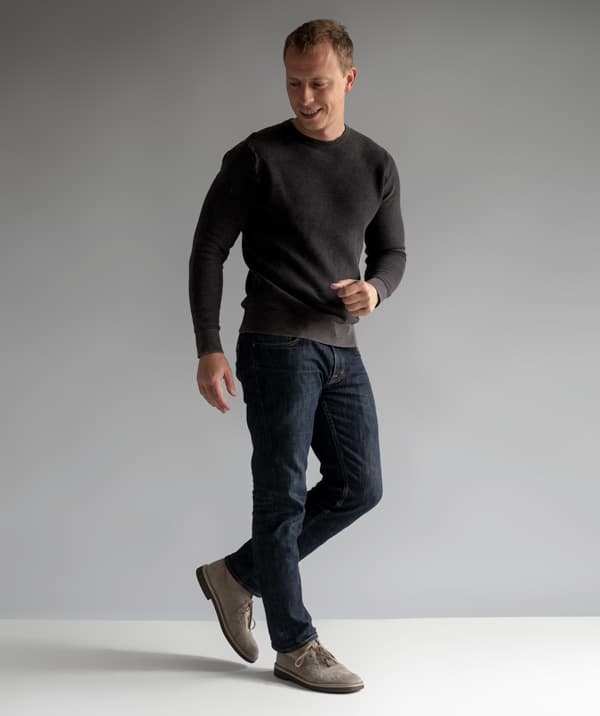
However, you want to make sure that the jeans fit consistently throughout the leg, meaning you want to avoid jeans that are tight in the thigh and loose below the knee. If you have large thighs you may benefit from tapered jeans. Jeans stretch a lot in the waist, so it is reasonable to size down one or more sizes in order to achieve a preferred fit in the legs and the seat.
Another consideration is proper pants rise, which is the length from the waist to the bottom of the zipper. You may have come across terms like low rise or high rise jeans. There aesthetic considerations involving appearing slimmer or taller, read our full guide: Pants Rise Explained (and Why Low Rise Isn’t Always Your Best Choice)
With jeans, it is preferred to go for a half break, which allows a person to turn up the cuffs of the pants if they please. Some people find it desirable to get even longer pants that develop multiple breaks, or folds, known as “stacks.”
Check out my current favorite pair of affordable jeans.
How Men's Shorts Should Fit
Shorts should fit like casual chinos in the seat and leg, which is to say that they should be slim but not tight. Again, avoid pocket flair and pleats. The rise is a matter of preference, and they can fit low like jeans or higher like chinos. A modern pair of shorts is a bit shorter than many of its predecessors. The bottom of today’s shorts should not go past mid knee, although shorts that are 2-3 inches shorter than this are even acceptable.
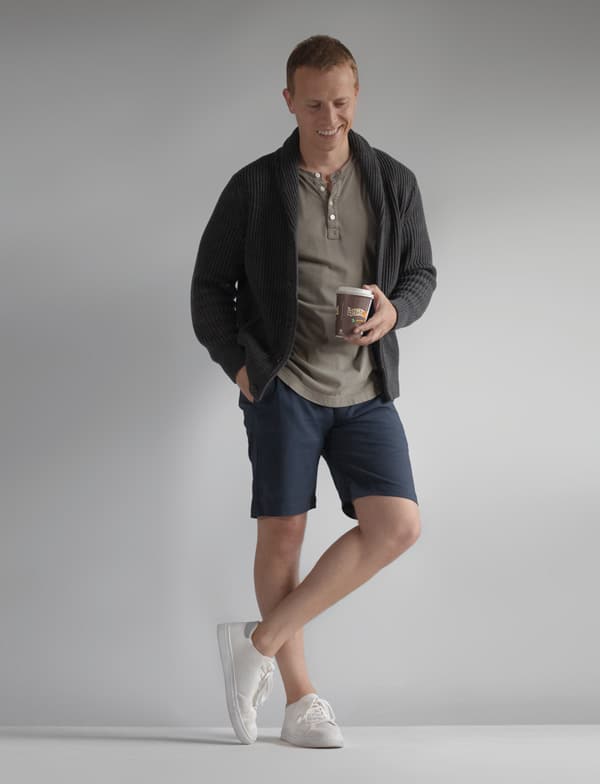
Check out Primer's Complete Visual Guide to Shorts
Ending Notes
When shopping keep in mind that pants can always be tailored to be shorter, but many producers don’t always leave enough fabric to let the pant legs out. Because of this, it is fine for the pant to be too long, just make sure they fit in the waist, the seat, and throughout the leg. It is best for all styles of pant to fit consistently through the body, which is to say that they shouldn’t be looser in the thigh than they are in the calf. Keep in mind that every body is different–feel free to try on different styles and sizes until you find what fits you perfectly.
Read the rest of our series on fit, where we examine the tenets of proper fit for jackets, pants, shirts, and accessories!
The Principles of Fit
- The Philosophy of a Good Fit
- How a Shirt Should Fit - The Principles of Fit
- How Pants Should Fit: Dress Pants, Khakis, Jeans, and Shorts
- The Best Fit: Suit Jackets and Sports Jackets
- The Best Fit: The Accessories
- How Outerwear & Layers Should Fit - The Principles of Fit



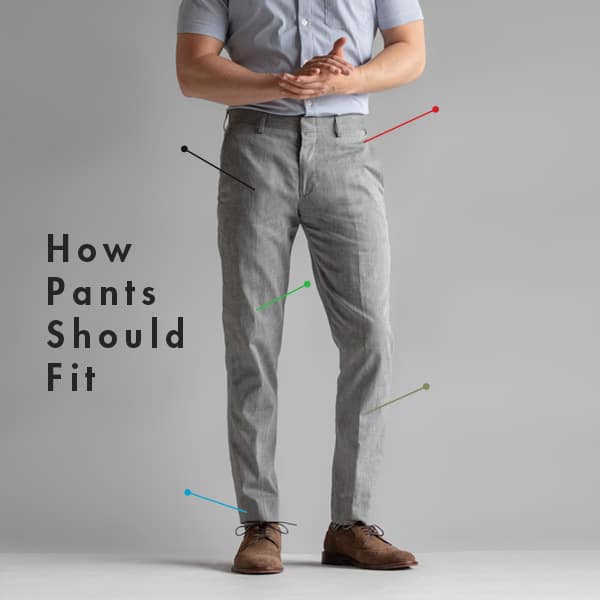
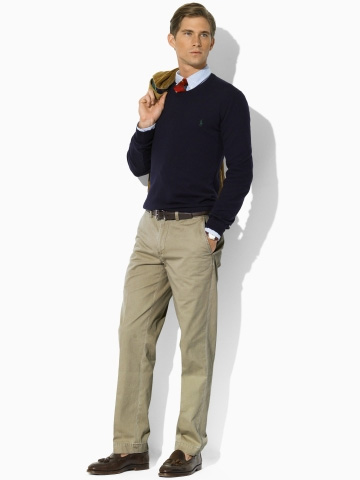
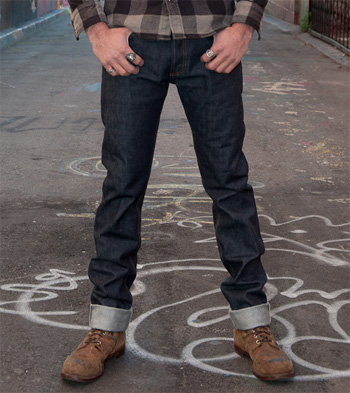

![Types of Jackets: An Encyclopedic Guide to Finding Your Perfect Style + How to Wear Them [28 Styles]](https://www.primermagazine.com/wp-content/uploads/2025/10/jacket-types_feature.jpg)

